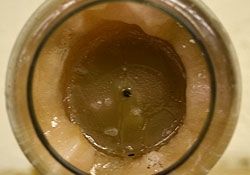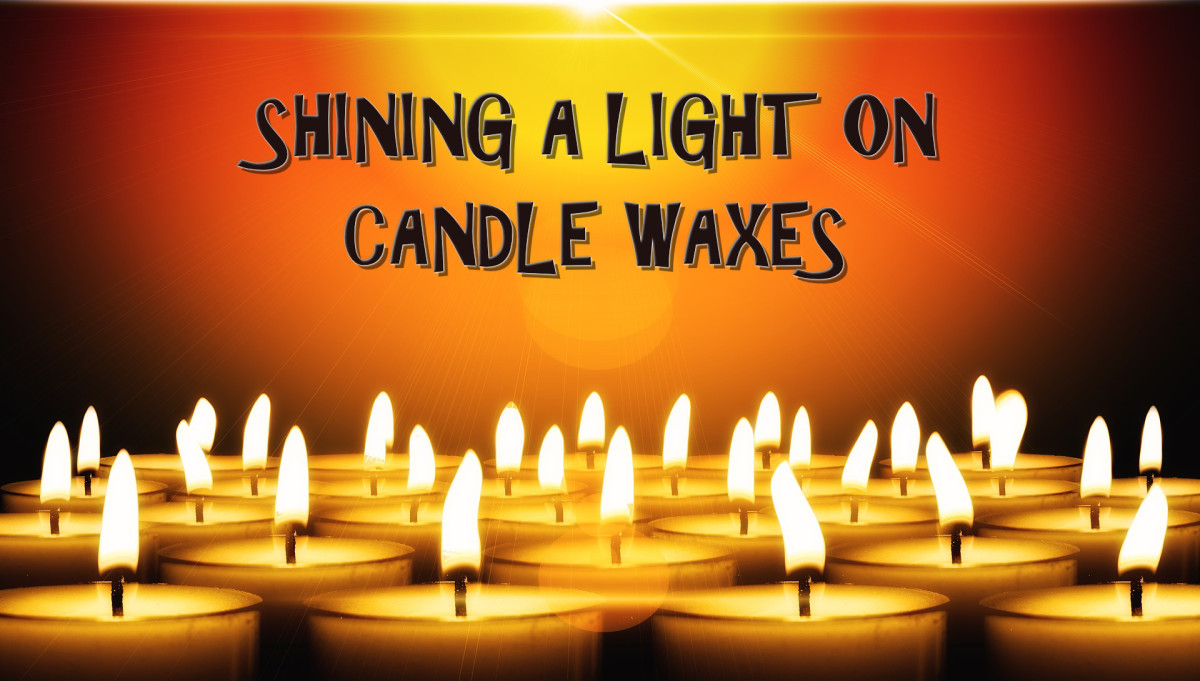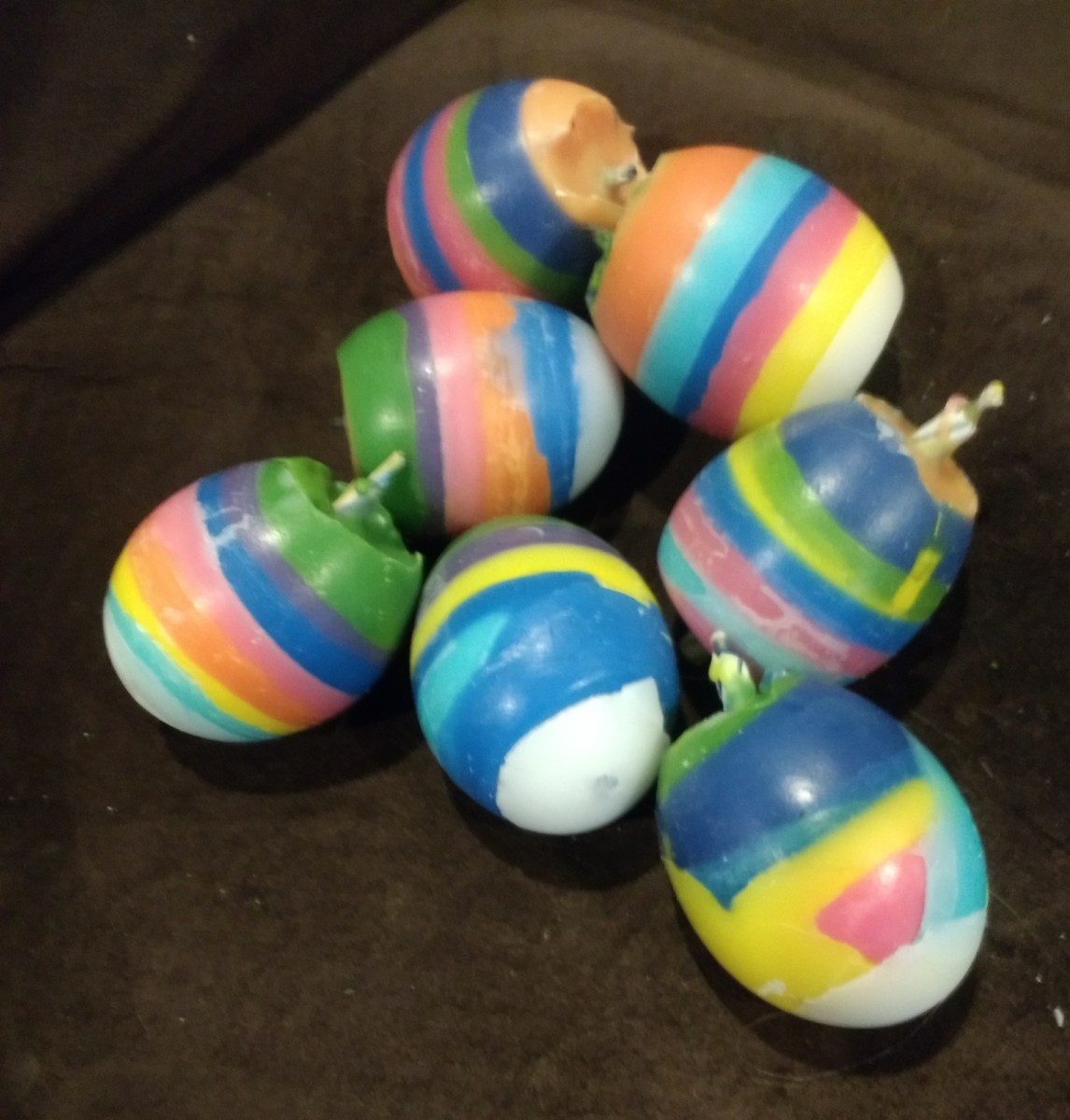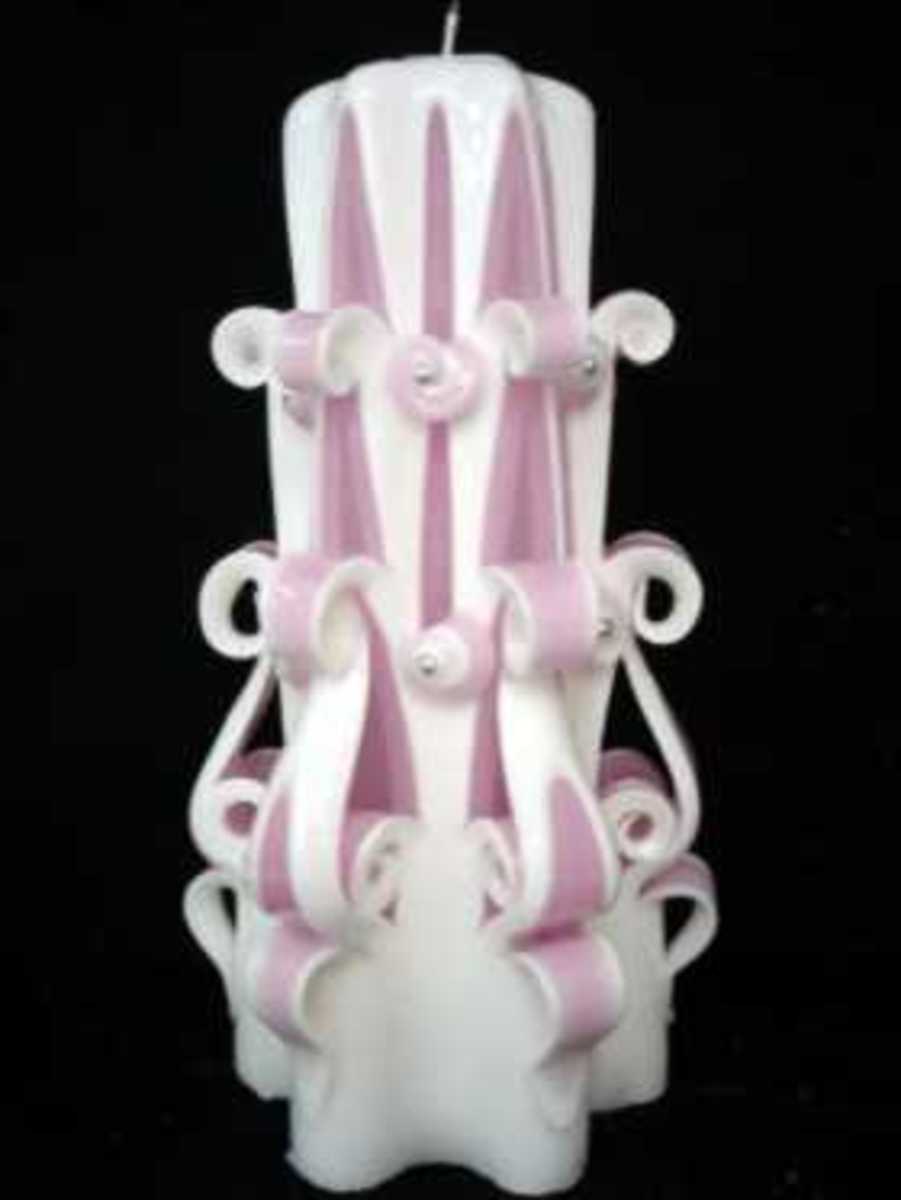Candle Burning Tips That Work

Some Candles Could Use a Little Help
Lets face it, anyone who loves to burn candles has most likely had at least 1 that didn't burn quite right, or not at all. What many people don't know is that there is a lot of ways to fix a candle that isn't burning the way it should. I have picked up a few candle burning tips over the years that have come in handy. The best part is that by fixing a poorly burning candle you can save yourself some money and a trip back to the store.

Some Common Candle Burning Problems
Some of the common problems people face when burning candles are that the candles tunnel, won't stay lit, or throw off a lot of soot, just to name a few. I'll address these issues and try to help find answers to any other issues posted in the comments section. As I come across more solutions to fixing candles that don't burn right I'll post them here.
I have come across another issue that people often have with candles and that is how to deal with wick that is too short. There are a few reasons a candle wick can become too short such being cut too low when trimming, breaking off the brittle black part by accidentally bumping it, or getting it that way from the manufacturer. I have a really great post with detailed instructions on how to fix a candle wick that is too short. Don't throw away your candles before you read this.

Tunneling Candles
As I have been skimming over candle related questions posted by people online I have seen the topic of tunneling come up quite often. For those of you who do not know what tunneling means in relation to candles, it is when the candle burns straight down the middle and not out to the edges. Tunneling, if it is going to happen will generally occur when burning larger diameter candles such as jars or pillar candles. The point of this post is to explain a few reasons why a candle may tunnel and how to try to fix the problem. I mean lets face it, nobody wants to toss a candle that has hardly been used.
Two of the main reasons a candle could tunnel are poor quality and too many short burns. In the case of poor quality, it doesn't necessarily mean that the wax was bad or the fragrance was cheap but most likely the wrong wick was used in the candle. If the size of the wick is too small, it doesn't create a large enough flame, which in turn doesn't create enough heat to melt the wax. What you want to see when you burn jar candles or votives, (any type of container candle) is for the wax pool to reach all the way to the edge.
Sometimes the tunneling effect is caused by too many short burns. Take note to the size of candle you are burning and to how long you are going to leave it lit. If you know you will have to extinguish the candle in an hour or even two, light a smaller one like a votive or tealights. A 4" diameter jar candle won't usually melt out to the edge in an hours time. A few short burns in a row will start your candle tunneling. What starts to happen next is as the flame works its way down into the candle it starts to melt wax off the walls. This wax runs down the sides and fills up the hole around the wick and drowns it out. Once that happens, relighting the candle will not work.
So how do you fix a candle that has tunneled? The easiest way to fix your candle is to remove all of the wax that is higher than the area around the wick. Use a butter knife or a fork to carve away the built up wax. You can use that wax in candle warmer or toss it in the trash. If you try to light your candle it may not easily light. This is because the wick is not long enough due to the liquid wax which ran down into the hole surrounding the wick. When the wax hardens it leaves the wick to short to light. You can carve some of the wax away from the wick and try lighting it. A better option is to lay the candle on its side, use your lighter to melt the wax away from around the wick and pour it into the trash. Relight your candle and make sure that you allow the wax pool to reach the edge before blowing it out.
For the poor quality candle you can do a temporary fix using the method above however you will need to repeat the process after a few burns because the candle will not ever melt all the way to the edges.

Soot From Candles
One of the biggest complaints about candles of all kinds is in regards to the soot that can be produced by them. There are a variety of ways to greatly reduce the amount of soot coming from your candles which will also help them to burn better. Today I will share some of these candle burning tips with you to help you have a better experience with you candles and save money. Lets first understand what causes soot from a candle flame.
What Causes Candle Soot
Soot from a candle is caused when there is incomplete combustion of the fuel. This can be caused by a number of factors. Two of those factors are the balance between the wax and wick in the candle and disturbing the candle flame. The fuel to the candle flame is the liquid wax which is being drawn up through the wick. Once the flame of the candle has started drawing the liquid candle wax up the wick, it does so at a steady rate. When the candle flame is disturbed the size of the flame changes and the amount of fuel being used is no longer consistent. When too much fuel is presented to the flame it is not all burned. The excess fuel is put off in the form of soot.
The Type Of Wax
I have seen so much on the internet about how soy candles are soot free or produce no soot so I did my own test. I made two jar candles that were identical sizes, had the same wicks, and no fragrance. The only difference was the wax type, one candle was paraffin, the other, soy. I lit both candles at the same time and did NOT trim the wicks before each lighting on either candle for the entire experiment. I extinguished both candles by blowing them out, not submerging the wicks. So, much of the soot seen was produced at that time. The image above shows the difference between the soy and paraffin candles. You can see that the paraffin candle produced more soot on the glass but that there is also soot on the side of the soy jar. Claims that soy candles will not produce soot at all are false.
Avoid Burning Candles in Drafty Areas
Burning candles in a drafty area such as near an open window, air duct, or fan will cause your candle to put off a large amount of soot. When something causes the candle flame to bounce around the size of candle flame changes. A steady flame will use a consistent amount of fuel. A wick that is bouncing around will draw fuel up the wick at a variable rate, sometimes too much, other times, not enough. When a large amount of fuel is drawn into the wick and then the flame size shrinks, not all the fuel is burned. The extra oil is expelled as soot into the air.
Use Open Bottom Hurricanes and Vases
Many event locations, where candles are used for decoration, require that the candle flame not be exposed above the top of an enclosure. This could mean the flame of your votive candle must be below the top edge of the glass or that pillars and taper candles need to be in tall cylinders or hurricanes. At first this sounds like a good idea to also keep the draft away from your candles, and it is. However, using a closed bottom cylinder or vase can create problems of its own. Fire needs and uses oxygen to burn. When you have a candle down inside of a container the oxygen is quickly used up and more is needed for the flame to continue burning. Naturally, more air is sucked into the container through the top but at the same time the warm air heated by the candle flame is trying to get out. This fight between the warm and cold air causes turbulence (a draft) in the container which causes the candle flame to dance and produce soot. The best way around this problem is to use a cylinder or hurricane vase that is open on both ends. Raise the container up off the table about a half inch using something that can spaced apart so air can get in through the bottom. For my test I used 3 stacks of coins, which I am not recommending you use, but to give an example of what I mean.
Put Candle Cappers On Jar Candles
If you are burning a jar candle with an opening of about 3" you can purchase a candle capper for less than $4.00. Obviously there is nothing you can do about the jar having a closed bottom but these jar cappers will help regulate the air flow in and out of the jars and reduce sooting. Jars will usually produce more and more soot the further down into the glass they burn. This is because the flame is getting farther and farther away from the fresh source of oxygen. I posted a video below that demonstrates how these jar caps work.
Trim The Wicks
The easiest way to reduce the amount of soot from a candle is to keep the wicks trimmed. I recommend starting with about a 1/4" wick for the first lighting. If after a few minutes the candle flame looks too big or is bouncing around (while not in a draft) you should trim the wick a little shorter. Keep an eye on your lit candles, they should never be left burning unattended. If your candle has been burning for a long time the wicks may need to be trimmed again. Don't be afraid to blow a candle out, trim the wick and relight it.
Purchase Quality Candles
Make sure you are getting a well made candle. A well made quality candle doesn't mean expensive, it means well made. Anyone can melt some wax through a string in it and call it a candle. Is it a candle? Yes. Will it burn? Maybe. Should you spend your hard earned money on it? Probably not. The internet is full of pages on which people are selling candles. Google search term candles, currently there are 165,000,000 results. An experienced candle maker will know how to match the wick size, wax type, fragrance, and candle size to produce a great burning candle.
Conclusion
Use these tips to get the most value and the best burn out of your candles.
How Candle Cappers Work
Does Freezing Candles Make Them Last Longer?
Feel free to post problems you have had with burning candles or solutions to help everyone have a better experience using candles.








